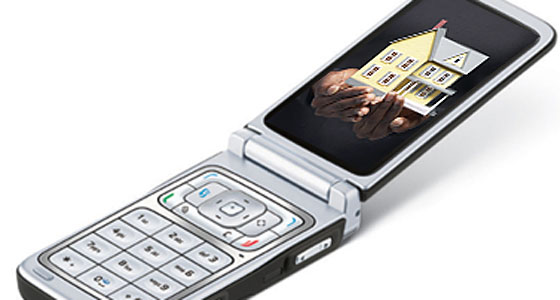A new study has found that certain properties of piezoelectric materials can be used to charge nano or micro devices in the future ● For example, a cell phone with a battery made of piezoelectric materials, which will be charged by the sound waves during calls
Nechama Almog, ThePeople system, DailyMaily

Imagine a cell phone that charges itself and never runs out of electricity, thanks to the user's sound waves, which are converted into the electrical energy it needs to operate. Yes, chatting will one day save the draining batteries of mobile devices - if the research of two American universities bears fruit.
The idea is not as far from implementation as one might think, thanks to Prof. Tahir Kagin, from the Department of Materials Engineering at Texas A&M University, together with a team of researchers from the University of Houston. The research team, which focuses on nanotechnology, reached a significant discovery related to energy storage - a field that is widely studied, both due to the trend of developing "green" technologies and due to the growing demand of users for devices and products whose operating range between charging and charging will be greater - even though every day they are getting more and more sophisticated and consume more electricity.
Prof. Kagin and his colleagues discovered that the energy storage capacity of certain piezoelectric materials improves by 100% when they are produced in very small dimensions - in this case with a thickness of about 20-23 nanometers. This finding may greatly affect the field of electronic devices, such as cell phones, laptops, or music players that are used in everyday life to devices that are used by soldiers on the battlefield - which charge by themselves and do not require the replacement of power sources, such as batteries.
Piezoelectric materials have been known for more than 100 years and are used in various industries. These materials are known to generate electricity in response to physical stress. For example, you can find them today in quartz watches, or in cigarette lighters in cars - the pressure of the spark plug affects a piezoelectric crystal, which in response produces sufficient electrical voltage to create a spark in the spark plug. A night club was even established in London, under whose dance floor rows of springs made of piezoelectric materials were spread, generating electricity due to the pressure of the boisterous dancers - all of which was used for the purposes of lighting and music systems.
While new applications are being developed in these fields every day, Prof. Cagin said, research on piezoelectricity at nanoscale is still new and much effort is being invested in it. For example, he said, imagine that instead of working with materials the size of an electric pole, we could work with the same materials but the size of a hair. "When such a fundamental change in dimensions occurs, materials act and react differently, and when we reduce materials to nano dimensions, their properties change dramatically. We have proven that at a certain size - between 20 and 23 nanometers - it is actually possible to improve the generation and storage of energy in piezoelectric materials by 100%. Disturbances in the form of sound waves, similar to pressure waves in gases, liquids and solids - can be used to charge nano or micro devices in the future. For example, a cell phone with a battery made of piezoelectric materials can be charged by the sound waves generated by a few 'good' conversations", added Prof. Cagin.

3 תגובות
Interesting article!
10 out of 10!!!
And how will the phone of the types who only know how to listen and not talk be charged?
The device does not store energy, as has been written several times, but only provides it and of course it has to be directed to a rechargeable battery. The piezo electric crystal in quartz watches (they are called that because the crystal in question is made of quartz) is not used to supply energy but to determine an accurate time base (applying an electric voltage to the crystal - the opposite of the operation in question in the article - causes the crystal to vibrate at a precise frequency that depends on its physical dimensions). A cigarette lighter in a car works by means of a heating element and not by the crystal in question. Precisely manual cigarette lighters - those with the press, not with the rotation of a wheel, activate an electric piezo crystal that provides an electric spark that ignites gas. The same goes for spark plugs for gas stoves. I personally think that charging only while talking (even if it is thin crystals that provide more energy) is inferior compared to photoelectric cells - as has been in computers for a long time. The whole idea is not new. Already decades ago a microphone with a preamp was offered An amplifier in which the energy to operate the amplifier was part of the energy of the electric piezo crystal that creates the sound waves - yes, an electric piezo crystal is used in microphones as a device that transforms the sound waves into corresponding electric waves.